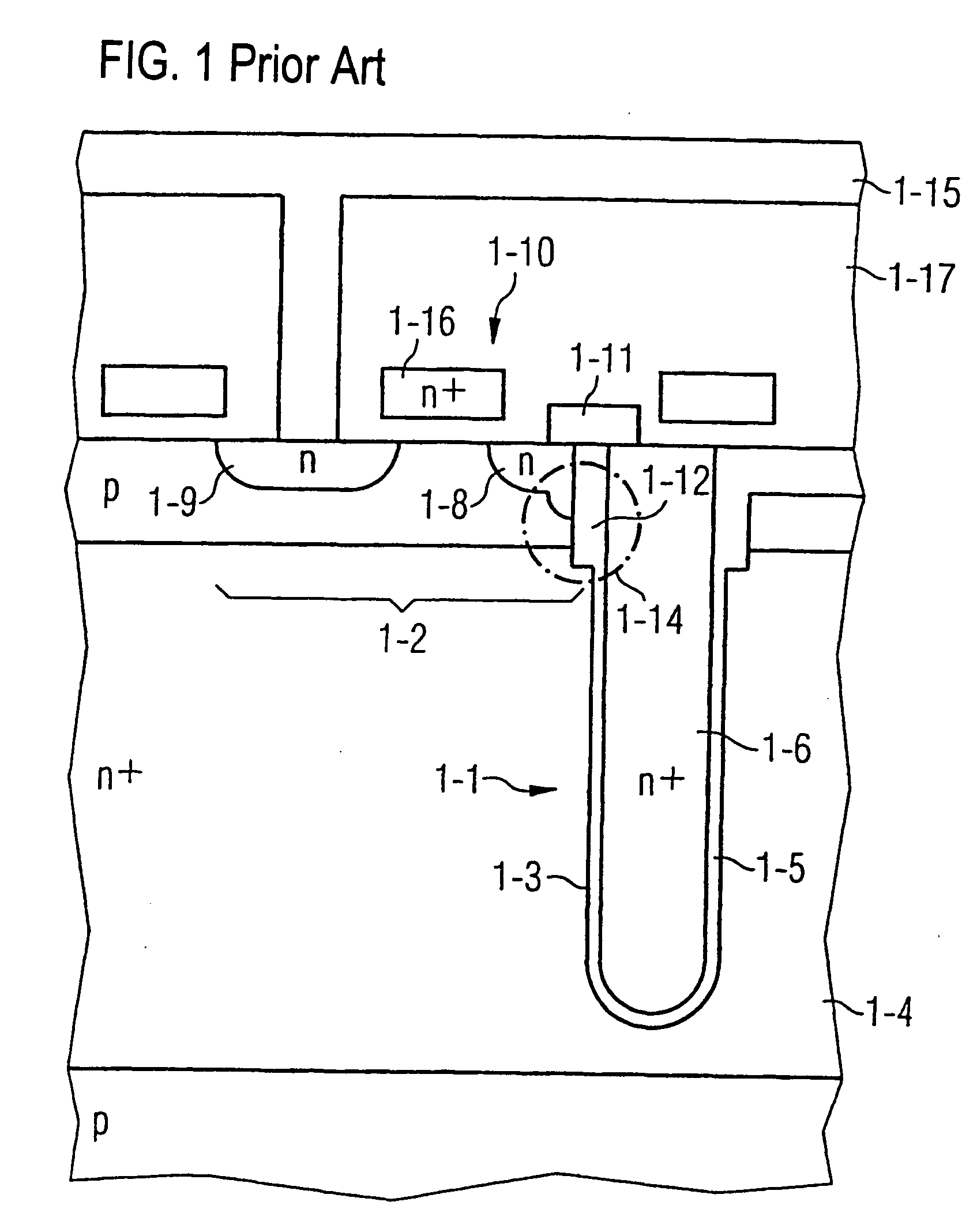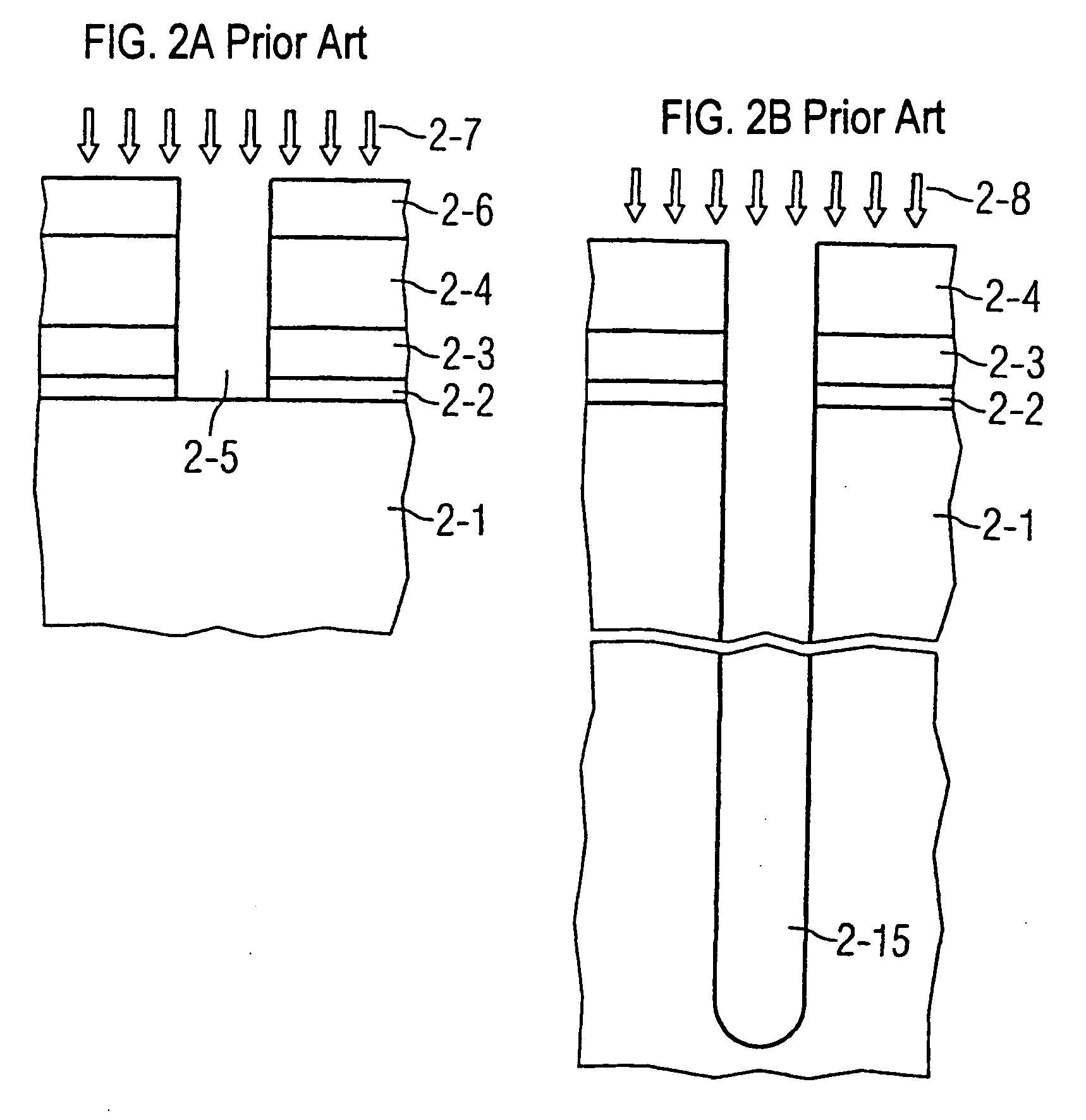Method for fabricating trench capacitors for integrated semiconductor memories
a semiconductor memory and trench capacitor technology, applied in the direction of semiconductor devices, electrical equipment, transistors, etc., can solve the problems of enlargement of the surface of the trench capacitor, and achieve the effects of preventing the constriction of the upper trench region, good covering, and sufficient protection
- Summary
- Abstract
- Description
- Claims
- Application Information
AI Technical Summary
Benefits of technology
Problems solved by technology
Method used
Image
Examples
Embodiment Construction
[0089] Referring now to the figures of the drawing in detail and first, particularly, to FIGS. 3A-3H thereof, there is shown an embodiment of a method according to the invention for fabricating memory cells with trench capacitors and selection transistor.
[0090]FIG. 3A shows a semiconductor substrate 3-1, which is a p-doped silicon wafer in this embodiment, with an applied layer stack containing a thin pad oxide 3-2, a nitride layer 3-3, an oxide 3-4 having a thickness of about 1 μm to 2 μm, and a polysilicon layer 3-5 having a thickness of 200 nm to 300 nm. A TEOS layer 3-4 may also contain other oxides, e.g. silane oxide.
[0091] Afterwards, the polysilicon layer 3-5 is patterned with the aid of a standard photolithographic method that prescribes the structure, position and cross section of the trenches to be produced for the trench capacitors in the semiconductor substrate 3-1. Afterwards, a first horizontal mask 3-8a is produced selectively with respect to the polysilicon layer 3...
PUM
 Login to View More
Login to View More Abstract
Description
Claims
Application Information
 Login to View More
Login to View More - R&D
- Intellectual Property
- Life Sciences
- Materials
- Tech Scout
- Unparalleled Data Quality
- Higher Quality Content
- 60% Fewer Hallucinations
Browse by: Latest US Patents, China's latest patents, Technical Efficacy Thesaurus, Application Domain, Technology Topic, Popular Technical Reports.
© 2025 PatSnap. All rights reserved.Legal|Privacy policy|Modern Slavery Act Transparency Statement|Sitemap|About US| Contact US: help@patsnap.com



